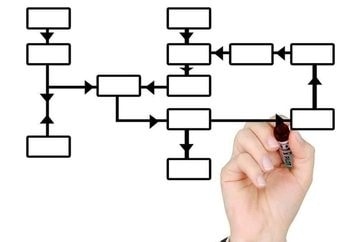
What is a business process?
Let's first look at a generic definition of a process. It is a series of actions or steps taken in order to achieve a particular result. In business we can be more specific when it relates to the business and how the process helps achieve the business goals and objectives. Then we call it a business process.
The Business Analysis Body of Knowledge (BABOK) defines a business process as "An end-to-end set of activities which collectively responds to an event, and transforms information, materials, and other resources into outputs that deliver value directly to the customers of the process. It may be internal to an organisation, or it may span several organisations."
Some great examples of business process are:
- a client onboarding process
- accounting management process
- quality assurance and change management process
While these are great examples, it is not a complete list. Anything that happens in a business that needs to achieve a certain goal, is a business process. We can clearly see this in the above examples.

Breaking down a business process
As we can see from the BABOK definition, a business process has various components that make it whole. Let's have a closer look at these to better understand what a business process is.
The basic components of a business process are the inputs, outputs, stakeholders and the activities or tasks. To show this further, let us use a sample of Person A who wants to withdraw funds from their bank account via an ATM. The process also has a sequence flow to indicate the order the process follows.
Inputs are the resources that are used to achieve the task successfully. It can be information from a spreadsheet, a price list or any piece of information that can be used to complete the process. In the above example, it is the client's card and their pin code.
Stakeholders are people, roles, systems that take part in and have a stake in the process. In our example the client, the ATM and the bank are the stakeholders in our example process.
Outputs are the successfully achieved goal of a process. In our example, the goal of the process is to withdraw money. If the client is able to successfully get their money from the ATM, the process ends and the goal is achieved. If there are any errors that prevent the client from getting their money, then the process stops and cannot finish successfully.
A process always has something that triggers it to begin. In our simple example above, the trigger is when a client puts their card into the ATM and enters their pin.
Difference between a process and a procedure
A process is not the same as a procedure.
A process is a series of tasks that uses inputs (information) to create an output (a result).
A procedure is a series steps used to execute a process or part of a process (the how-to).

Other terms used for business process
There are many terms used to today to describe business processes and the management of them. Below are some known terms that relate to business processes. That is as far as the likeness goes.
- business process flow - the sequence flow of the activities or tasks of the business process
- business process improvement (BPI) - the purpose of improving business processes to improve business products, quality and ROI
- business process re engineering (BPR) - recreating core business processes with the goal of improving product output, quality, or ROI.
- business process management (BPM) - a discipline in operations using various methods to analyse, measure, improve, optimise, and automate business processes
- workflow management - the work/tasks people do and whether they can be automated
- business process modelling - modelling the process in a diagram
An article is not complete without mentioning that business processes are best represented in a business process model. Business Process Modeling Notation (BPMN) is an industry standard. It is a diagramming format that represents the sequential flow of work across defined tasks and activities through an enterprise or part of an enterprise. The above ATM example is modeled in BPMN.
